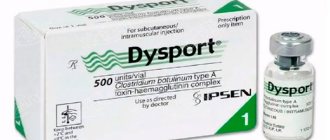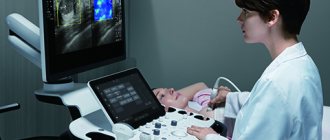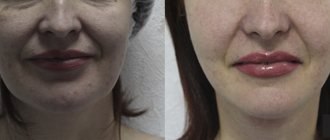Initial consultation
Very often, the result of the first visit can be a categorical refusal to undergo surgical intervention in the body, or a significant adjustment in the planning stages. Often, refusal of plastic surgery occurs due to demanding the impossible from the plastic surgeon. It is worth remembering that surgeons are not magicians who can make unrealistic dreams come true. There is always a certain limit to the capabilities within which a specialist operates. The result of communication with a good doctor will be a compromise that will satisfy the patient’s wishes and also will not contradict medical restrictions.
The decision to have surgery must be weighed. Seek advice from people you trust. Perhaps they still consider your appearance attractive, and therefore will be perplexed as to what “flaw” you decided to part with. In some cases, on the contrary, it is those around you who instill complexes associated with your appearance. So, first of all, think about why you want to have plastic surgery. Is this really an informed decision or a spur-of-the-moment impulse?
Advice from the Plastic Club: approach the issue of choosing your specialist very carefully. Spend your personal time, it will reward you later! Read articles, scour the Internet for photos and videos of work, read reviews about your specialist (just read between the lines, because there are many “dishonest” reviews written by his employees). Find his patients, chat. There are many forums on the Internet, everyone communicates there, and we are no exception - we also have a cool live forum))
The next stage is “trying on” the new appearance. Nowadays computer programs are used to simulate appearance. Therefore, before the operation, the patient can see what his stomach, chest, nose, ears, etc. will become. Think about the fact that your new appearance will stay with you forever. Imagine how comfortable you will be.
Advice from the Plastic Club: it is important after carrying out 3D modeling not to “get hung up” on that “ephemeral” result, because in life everything can turn out differently and even better!
Before surgery, it is important to enlist the support of loved ones. Consult in advance with family and friends, with those people whose opinion and support you need. After the operation there will be a recovery period when you need to follow some rules. For example, limit physical activity. Therefore, the support of loved ones is especially important.
Advice from the Plastic Club: and if you don’t have anyone at the moment (for example, you are from another city), then just visit us on the Plastic Club forum and we will support you before and after the operation!
Plastic surgery makes it possible to correct your appearance and say goodbye to complexes. However, one should not place enormous hopes. Mammoplasty or rhinoplasty is not the best way to keep your lover or fly up the career ladder. The goal of aesthetic surgery is to rid you of imperfections that cause discomfort.
Preparation for surgery and recovery after it
Preparation for proctological surgery
Before performing proctological surgery, it is necessary to know information about the patient’s health condition in order to provide for all possible risks of both surgery and pain management. I usually prescribe the following list of necessary tests to patients:
- General blood analysis,
- General urine analysis,
- Biochemical blood test (total protein, creatinine, total bilirubin, AST, ALT, glucose, alpha-amylase, cholesterol),
- Blood test for coagulation (hemocoagulogram),
- Blood test for group and Rh factor,
- Blood test for syphilis, HIV, Hepatitis B and C (RW, HIV, HBsAg, HCV),
- ECG,
- Consultation with a therapist about the absence of contraindications to the operation.
This list can be either shortened or expanded depending on the complexity of the operation, the risk of anesthesia and the patient’s health condition.
I usually recommend that my patients who are about to undergo surgery for hemorrhoids, fissures or simple fistulas of the rectum not eat the night before; they can drink tea and cookies. You should not eat or drink on the day of surgery. It is necessary to prepare the rectum for surgery with regular cleansing enemas or special microenemas - Microlax, Enema Klin. Regardless of the method used, two enemas must be given the night before the operation, and two more on the morning of the operation. It is worth noting that this rule should also be observed when preparing for an examination by a proctologist. In no case should you prepare for surgery with drugs to prepare for colonoscopy - Fortrans, Lavacol, Fleet Phospho-soda, as they fill the rectum with a large amount of fluid, which often makes it impossible to perform surgery at all. On the day of surgery, the perineum should be thoroughly shaved.
Anesthesia
Most often I perform operations for diseases of the rectum and perineum, either under local or spinal anesthesia. I use local anesthesia for minor operations. Using a syringe, a local anesthetic is injected under the skin and pain relief (“freezing”) occurs in the area. Only slight pulling sensations remain during some manipulations during the operation. Anesthesia stops working approximately 1-2 hours after the operation, from this time there are no restrictions on physical activity. Spinal anesthesia is performed by an anesthesiologist. He injects a local anesthetic into the canal where the spinal cord runs. In this case, everything that is located below this level is anesthetized - the buttocks, perineum, legs. This anesthesia wears off after 4-6 hours, from which time it is possible to get up only to go to the toilet, and it is advisable to lie down for at least 12 hours.
Proctological surgery
On average, depending on the complexity, I perform operations for hemorrhoids, fissures or simple rectal fistulas in 20-30 minutes. In more severe cases, with a combination of several diseases, the operation may take 1-2 hours or even more.
Pain and recovery after proctological surgery
After any proctological surgery there will be pain in the perineal area. It can be of varying intensity, from minor discomfort to severe. I use modern minimally invasive techniques and a gentle approach to tissues - this is why in my patients the pain syndrome is mild and the need for pain relief is minimal. However, I strongly recommend that everyone take painkillers after surgery, at least for 3 days. Ketorolac (Ketanov, Ketorol, Ketolak, Dolak, Ketalgin) is considered the most effective of the non-narcotic analgesics.
Also, the wound should bleed - this is normal. There shouldn't be a lot of blood, but don't be afraid of a red-colored napkin. If blood clots are released from the rectum or blood drips from it, you should immediately seek help from a doctor. It is worth noting that an increase in body temperature to 37.5° is also absolutely normal in the first few days after surgery. Depending on the severity of the operation, the patient’s health status and his individual sensitivity to pain, restoration of work capacity occurs from 1 to 5 days after the operation. After minor operations, my patients begin work as usual the next day.
How to behave after proctological surgery
After the operation, it is necessary to maintain hygiene, wash yourself after each trip to the toilet, and do not use toilet paper. It is necessary to exclude fatty, salty, smoked, spicy foods, and alcohol from the diet. The stool should be soft and daily. If the patient is prone to constipation, then I recommend using laxatives all the time until the wound heals. After discharge, you should independently perform dressing changes daily with mandatory visits and monitoring by the operating surgeon. The specific type of dressing is selected individually depending on the type of operation.
Wound healing time
According to international studies, the average healing time for a perineal wound is 1-1.5 months. Throughout this period, it is necessary to remain under the supervision of the operating surgeon, perform dressings, and carefully monitor the stool. Only if these conditions are met is it possible to become a fully healthy person and gain a decent quality of life, forever forgetting about the problems that made you turn to a proctologist.
Actions of the doctor and patient a month before surgery
Approximately 4 weeks before surgery, laboratory and instrumental studies. Their goal is to identify factors that will require correction before endoprosthetics. In particular, the following are appointed:
- checking the lungs using x-rays;
- electrocardiogram;
- general blood analysis;
- general urine analysis.
If deviations from the norm are detected, the doctor will prescribe appropriate treatment. During the remaining period, it is possible to eliminate the reasons that will be contraindications for the operation.
At the same stage, the doctor may recommend performing a set of exercises that will promote successful rehabilitation after installation of the endoprosthesis. If during the process the patient feels severe pain, then you need to stop training. After additional consultation, the set of exercises can be adjusted or the problem of this pain can be identified.
Often people do gymnastics incorrectly because there has been no physical activity in their lives for a long time. It is best to watch videos from rehabilitation centers where the main mistakes are explained. If the exercise is unclear, be sure to ask your orthopedic doctor about it.
Outpatient surgeries
Blepharoplasty - eyelid surgery, correction of Asian eyes
- Clinical blood test.
- Blood test for HIV.
- Blood test for RW (syphilis).
- Australian antigen HBS, HCV (hepatitis B, C).
- Blood sugar.
- Coagulogram or APTT, prothrombin + INR, fibrinogen, thrombin time, D-dimer.
- ECG.
Otoplasty – ear plastic surgery, correction of protruding ears
- Clinical blood test.
- Blood test for HIV.
- Blood test for RW (syphilis).
- Australian antigen HBS, HCV (hepatitis B, C).
- Blood sugar.
- Coagulogram or APTT, prothrombin + INR, fibrinogen, thrombin time, D-dimer.
- ECG.
Hair transplantation
- Clinical blood test.
- Blood test for HIV.
- Blood test for RW (syphilis).
- Australian antigen HBS, HCV (hepatitis B, C).
- Blood sugar.
- Coagulogram or APTT, prothrombin + INR, fibrinogen, thrombin time, D-dimer.
- ECG.
Intimate surgery - labiaplasty
- Clinical blood test.
- Blood test for HIV.
- Blood test for RW (syphilis).
- Australian antigen HBS, HCV (hepatitis B, C).
- Blood sugar;
- Coagulogram or APTT, prothrombin + INR, fibrinogen, thrombin time, D-dimer;
- Flora smear;
- ECG.
- hospitalization of patients begins at 10 am;
- the operation is performed on an empty stomach, the last meal and liquid intake should be no later than 8 hours before the operation;
- the operation is not performed during menstruation, 4 days before and after menstruation;
- during the period of exacerbation of chronic diseases, acute respiratory infections;
- You must come to the surgery without makeup or nail polish on your fingers or toes;
- After outpatient surgery, patients are unable to drive and require an escort.
2 days before hospitalization, we ask you to inform us about confirmation or refusal of the operation by phone, 8 (903) 724-51-81.
For foreign citizens
A copy of a visa (for residents of non-CIS countries), migration card and passport is required. All analyzes must be provided with a translation into Russian.
The results of breast surgery and the recovery time after plastic surgery are significantly influenced by many factors. These should be well understood and discussed carefully with your doctor. The main criterion and the main factor ensuring the greatest safety of any plastic surgery is the initial state of your health. What basic health parameters should you pay attention to before any plastic surgery, including breast surgery? Read detailed recommendations before surgery >>>
Initial examination by a surgeon before plastic surgery
Before deciding on the possibility of plastic surgery, the surgeon conducts a thorough initial examination of the patient. During the first visit, the specialist not only examines the surgical site, but also conducts a survey regarding previous diseases, injuries, allergic reactions and medication use. At this stage, it is very important to establish contact between the surgeon and the patient in order to convey to the doctor as accurately as possible the final aesthetic goal of the correction.
Today, highly intelligent computer modeling programs are used for this purpose, which make it possible to visually assess the future result. If during the initial examination the surgeon does not identify any obvious contraindications to the operation, proceed to the next stage of preparation - laboratory diagnostics.











